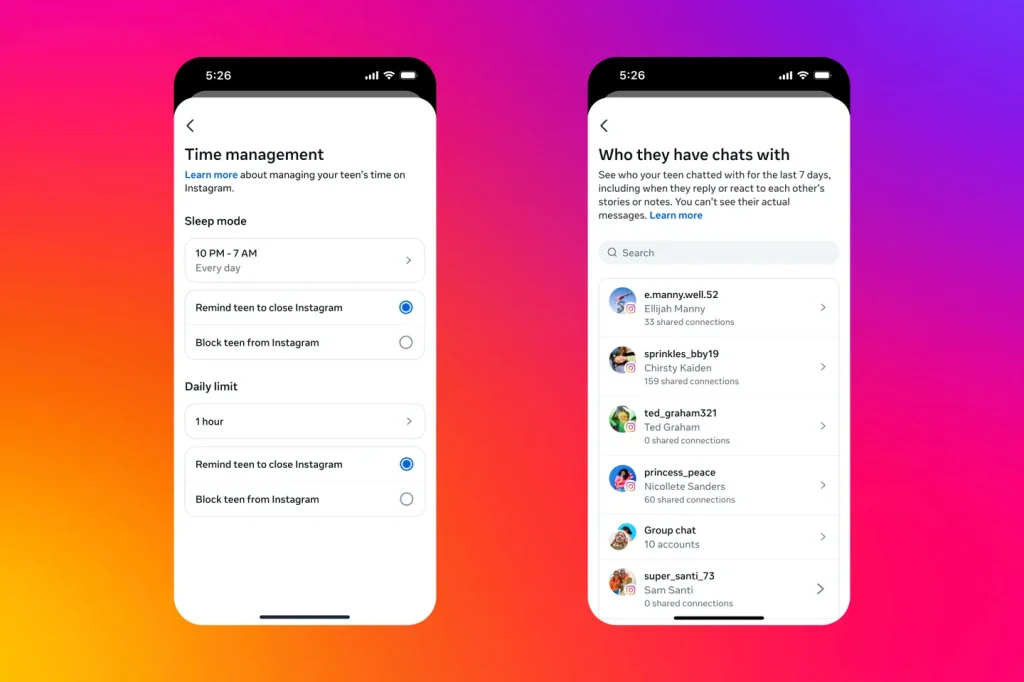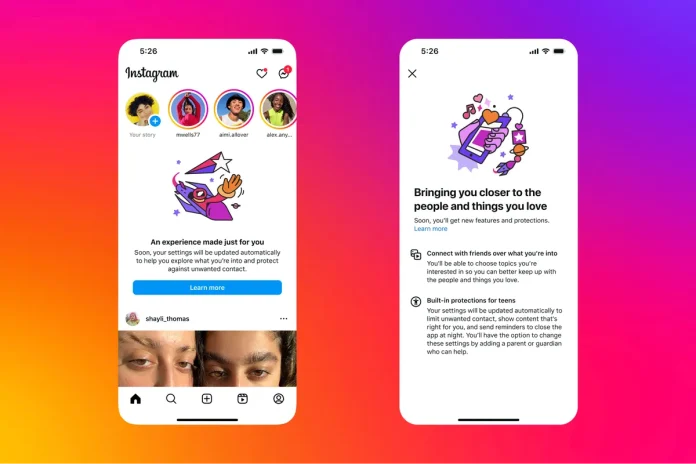Starting today, Instagram is rolling out a new type of account for all users under the age of 18, referred to as “Teen Accounts.” The new account settings are aimed at improving the safety and privacy of tens of millions of teens on the platform. These changes will affect both new and existing users, and the account type comes with default protections, restrictions, and enhanced parental controls.
Key Features of Teen Accounts

One of the major changes is that all accounts for users under 18 will now be set to private by default. Previously, this applied only to users under 16. Instagram is also implementing new features to bolster these protections, such as blocking unknown adults from direct messaging minors, which has been a long-standing feature. A new Sleep Mode will now automatically mute notifications between 10PM and 7AM, encouraging better digital well-being for young users.
Antigone Davis, Meta’s global head of safety, highlighted the significance of these updates: “This really standardizes a lot of the work that we’ve done, simplifies it, and brings it to all teens. It provides essentially a set of protections that are in place and are already populated.”
In addition to the privacy settings, teens will now have more control over the types of content they see on Instagram. They will be able to select age-appropriate topics to see more of on the Explore page and in recommendations, including categories like “sports,” “travel,” and “animals.” Instagram is also expanding its content moderation for teens, restricting certain types of content that appear in Reels and on the Explore page, while also sending regular reminders encouraging teens to take breaks from the platform.
Expanded Parental Controls
Instagram’s parental controls are also getting an upgrade. Parents will now have more oversight of their teen’s activity, including the ability to see who their child has messaged in the past seven days (though the content of the messages will remain private). Parents will also have control over when Sleep Mode is activated and will be able to monitor the topics their teen engages with most frequently.
One key change is that teens under the age of 16 will now need parental permission to make certain adjustments to their accounts, such as changing them from private to public. Parents will have to set up Instagram’s parental supervision tools to approve these changes.
Gradual Rollout and Future Expansion
Instagram’s new teen account features will initially be rolled out to users in the United States, the UK, Canada, and Australia. The update will first affect new teen accounts, with existing accounts being transitioned to this new setup within a week. Meta plans to bring these teen accounts to the European Union later in the year and expand the feature across its other platforms by 2025.
Combatting Age Falsification with AI
While Instagram is enhancing protections for teens, Meta acknowledges that some users may still attempt to bypass these protections by lying about their age. To address this, Instagram will use AI to verify the age of users. If, for example, someone claims to be 18 but receives a message saying “Happy 14th birthday,” Instagram’s AI can flag this discrepancy and take corrective actions. Instagram already requires users who attempt to change their age to verify their identity through methods like recording a video selfie, uploading an ID, or having others vouch for their age.
Antigone Davis explained the challenges of age verification, saying, “We have to take a multi-layered approach because there’s no one foolproof way to do this.”
Ongoing Concerns and Legislative Action
These changes come amid growing scrutiny of social media platforms and their impact on young users’ mental health. Following revelations from Facebook whistleblower Frances Haugen in 2021, lawmakers have intensified their focus on child safety online. In response, Instagram has rolled out a series of child safety features and launched parental controls in 2022. The platform has also agreed to participate in studies on the mental health effects of social media on teens and young adults.
Despite these efforts, many lawmakers remain cautious. Nearly 40 U.S. states are now backing the surgeon general’s proposal to implement warning labels on social media platforms, while the U.S. Senate passed a landmark child safety bill in July aimed at further regulating how social media platforms interact with younger users.
These new teen account features mark Instagram’s latest move toward creating a safer and more controlled environment for young users, balancing privacy with parental oversight and tackling the ongoing challenges of age verification on digital platforms.
4o









